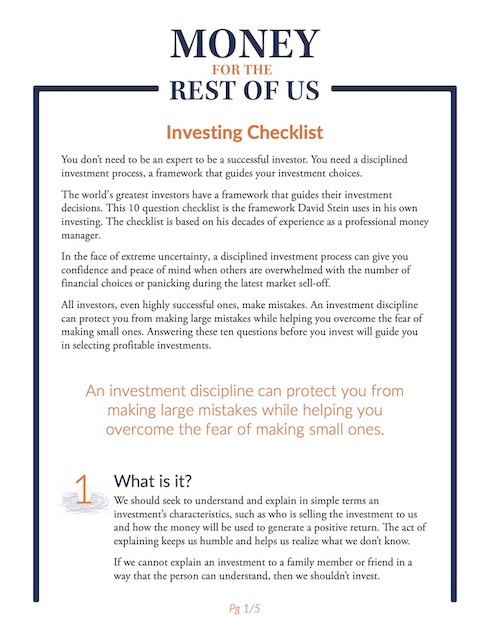What is risk and how do you manage it so you can protect against the downside and capture the upside.

In this podcast, you’ll learn:
- What is risk.
- Why we have to manage risk instead of trying to eliminate it.
- Why nature never completely blows up but the financial system can.
- Why we need to build pockets of independence from the financial and market systems.
- The four steps we can take to capture the upside.
Show Notes
Against the Gods: The Remarkable Story of Risk by Peter L. Bernstein
Article on managing risk by Peter L. Bernstein – What Happens If We’re Wrong – New York Times June 22, 2008
The Click Moment: Seizing Opportunity in an Unpredictable World by Frans Johannson
Summary Article
The World Is Getting More Risky
Last week, I wrote that financial calamities eventually come so we should be prepared.
One way we prepare is by scaling our exposure to risky assets to our ability to recover when a market sell-off occurs.
What Is Risk?
What does it mean for something to be risky? And how should individuals define and manage risk?
Elroy Dimson of the London Business School defined risk as more things can happen than will happen.
The list of things that could potentially happen, both good and bad, is much longer than the list of what actually will happen.
As humans, we contemplate this wide range of potential outcomes, acknowledge there are outcomes we haven’t considered (i.e. surprises) and then act based on what we expect will happen.
Risk Management
Risk management is dealing with the consequences of being wrong in our expectations. It is especially focused on minimizing the harm and pain caused by negative outcomes.
Using our definition, something is more risky if there is a wide range of potential outcomes and the harm caused by being wrong in our expectations is great.
Something is less risky if there is a narrow range of potential outcomes and the harm caused by being wrong in our expectations is small.
In the financial markets, the range of potential outcomes is often the same from person to person, but the harm caused by being wrong in our expectations is individualized.
An Example
For example, consider two investors, each of whom invests $50,000 in stocks. Both face the same range of potential outcomes in terms of what stocks will return in the next year. Both expect the return will be 7%.
One investor plans to use the money for a down payment on a house at the end of twelve months and it’s the bulk of his life savings.
The other investor is a multimillionaire and received the $50,000 as an inheritance from her great uncle.
For the first investor, investing the $50,000 in stocks is more risky, even though both investors face the same range of potential returns. The first investor should lower his exposure to stocks because of the large negative consequence if a sell-off occurs in the next year.
Complex Adaptive Systems
I also wrote last week that nature and financial markets are non-linear in that they don’t produce the same outcome every time even though the inputs and conditions are the same.
Nature and financial markets are also complex adaptive systems in that they are comprised of a wide variety of interconnected inputs that adapt and learn over time.
There is a difference though. Nature has existed for millions of years longer than financial markets.
Nature survives because while it experiences “negative outcomes”, these “errors” are localized and don’t spread in a way that the entire system is at risk of blowing up.
A system that experiences lots of small independent errors or stressors is more likely to survive than one that experiences a super-large stressor. Additionally, if the components of a system are kept independent or the connection between components is weak than small stressors are less likely to spread, leading to a catastrophic event.
Forest fires and epidemics are kept at bay if they can be isolated.
In 2008, the global financial system was nearly destroyed because securities, markets and investors had become so interconnected. There was a market pandemic that spread throughout the system because of the strong linkages between components.
Why The World Is More Risky
Greater interconnectedness among markets and people means the world is more risky. There is now a wider range of potential things that could happen (both good and bad), including outcomes that have not been anticipated.
Unpredictability and complexity have increased, which means what we expect will happen is less likely to occur, and we are more likely to be surprised.
Separate Pockets
How do we manage risk in this environment?
One way is to establish pockets of our lives that are independent from the market and financial systems. Food and water storage is an excellent example. Toledo, Ohio residents recently learned this lesson when their municipal drinking water was deemed unsafe due to a toxic algae bloom on nearby Lake Erie.
Becoming debt free, growing a garden, and learning other self-reliance skills are additional actions we can take to better manage risk in an increasingly risky world.
Related Episodes
Decision Making: Uncertainty Versus Risk
How Investors Cope With Radical Uncertainty
How Stories Go Viral and Drive Economic Events
